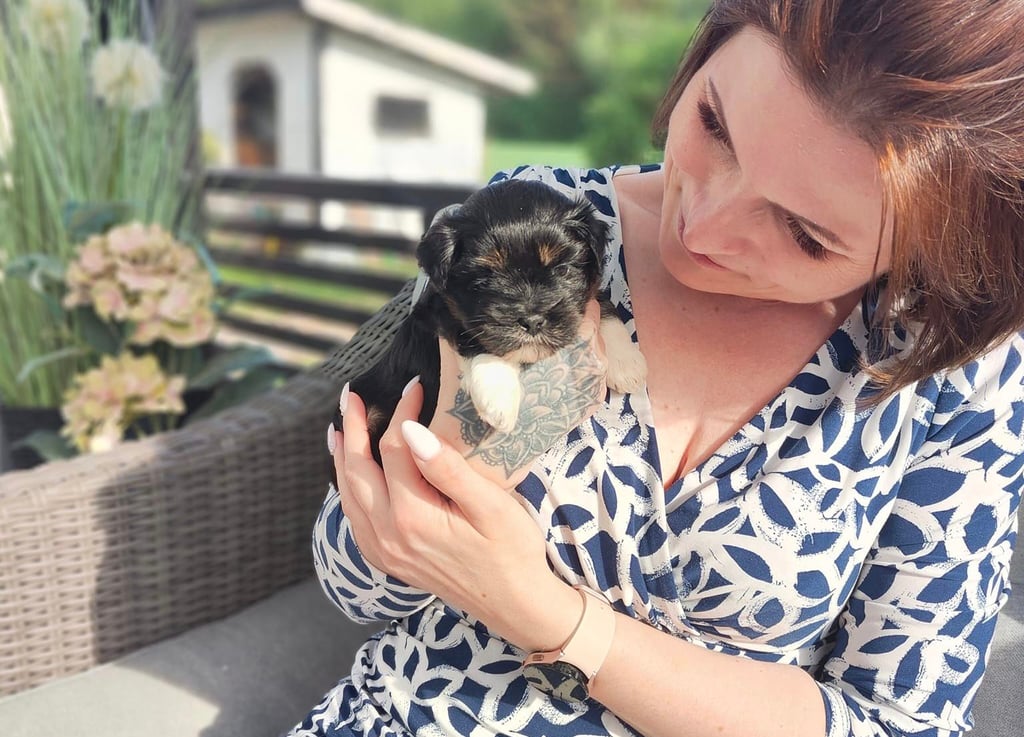Linebreeding: The Canine Family Reunion You Didn't Know You Needed
Ah, linebreeding – the art of keeping it all in the family. If you've ever wondered what happens when your dog's family tree starts looking more like a wreath, you're in the right place. Linebreeding is a breeding strategy that aims to produce dogs with specific, desirable traits by mating closely related individuals. Think of it as the canine version of a family reunion, but with fewer awkward conversations and more wagging tails.
Laura LhasaFam
2/12/20252 min read


The Family Tree: More Twists and Turns Than a Soap Opera
Linebreeding involves pairing dogs that share common ancestors, like cousins or even half-siblings. The goal is to reinforce desirable traits, such as a beautiful coat, a perfect gait, or that irresistible puppy-dog face. But let's be honest, it can also lead to some interesting family dynamics. Imagine explaining to your dog that their new mate is also their second cousin. Awkward!
The Good, the Bad, and the Adorably Fluffy
Linebreeding can be a double-edged sword. On the one paw, it can help solidify desirable traits and produce dogs that are the epitome of their breed standard. On the other paw, it can also increase the risk of genetic disorders and health issues. It's like playing a game of genetic roulette – sometimes you hit the jackpot, and other times you end up with a dog that has more quirks than a reality TV star.
The Benefits: A Tail-Wagging Success
When done correctly, linebreeding can produce dogs with consistent, predictable traits. Breeders can create a line of dogs that are not only beautiful but also healthy and well-tempered. It's like baking a cake from a tried-and-true family recipe – you know exactly what you're going to get, and it's going to be delicious (or in this case, adorable).
The Risks: A Howling Good Time
However, linebreeding isn't without its risks. Breeding closely related dogs can increase the likelihood of genetic disorders, such as hip dysplasia, heart problems, and other hereditary conditions. It's like rolling the dice – sometimes you get a perfect 10, and other times you end up with a dog that needs more vet visits than you have vacation days.
The Balancing Act: Keeping It All in Check
Successful linebreeding requires a delicate balance. Breeders must carefully select dogs that complement each other and avoid doubling up on undesirable traits. It's like matchmaking for dogs – you want to find the perfect pair that will produce the best offspring. And just like in human matchmaking, sometimes it takes a few tries to get it right.
The Takeaway: Love and Lineage
At the end of the day, linebreeding is all about love and lineage. Breeders are passionate about their dogs and want to produce the best possible pups. It's a labor of love that requires knowledge, dedication, and a bit of luck. So, the next time you see a dog that looks like it stepped out of a breed standard handbook, remember that there's a lot of science (and a little bit of family drama) behind that perfect pooch.
In conclusion, linebreeding is like a canine family reunion – full of familiar faces, a few surprises, and a whole lot of love. Whether you're a breeder or just a dog lover, it's a fascinating glimpse into the world of genetics and the lengths we'll go to for our furry friends. 🐾❤️
